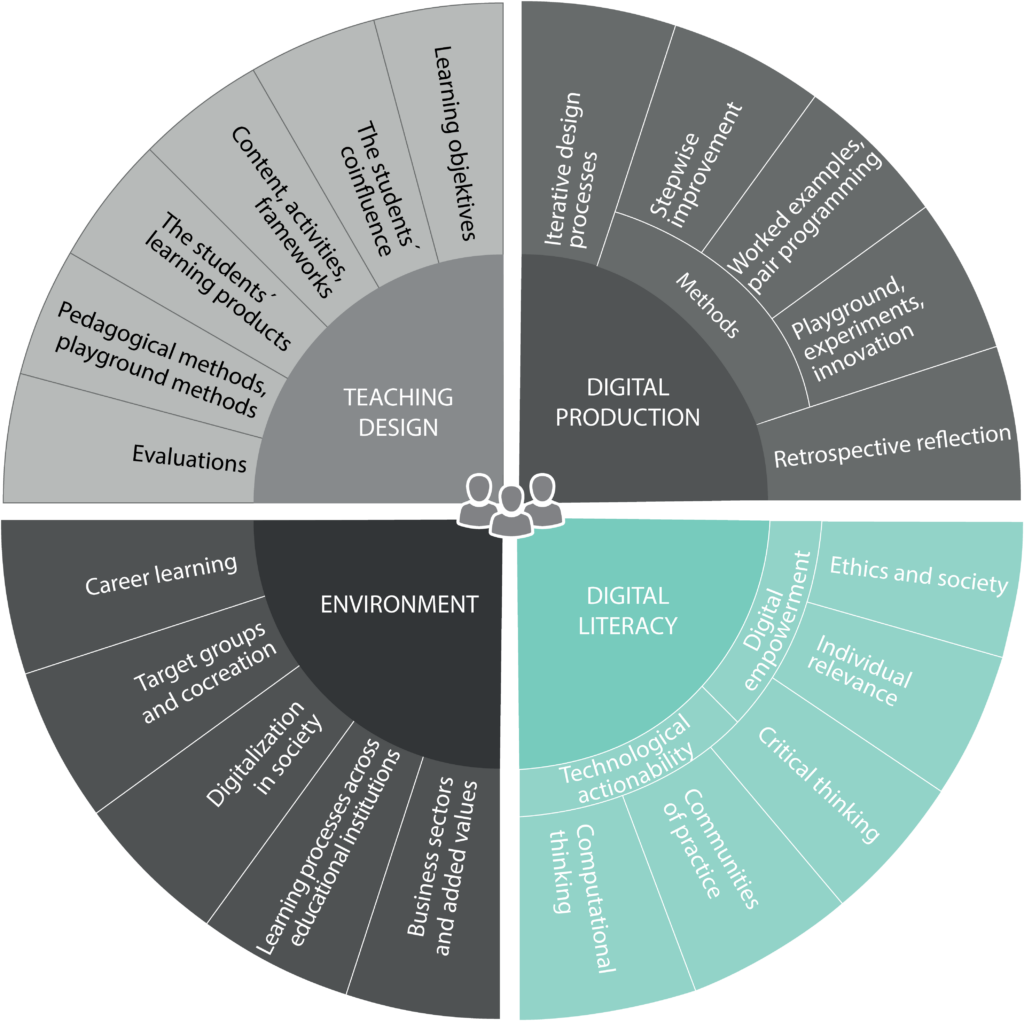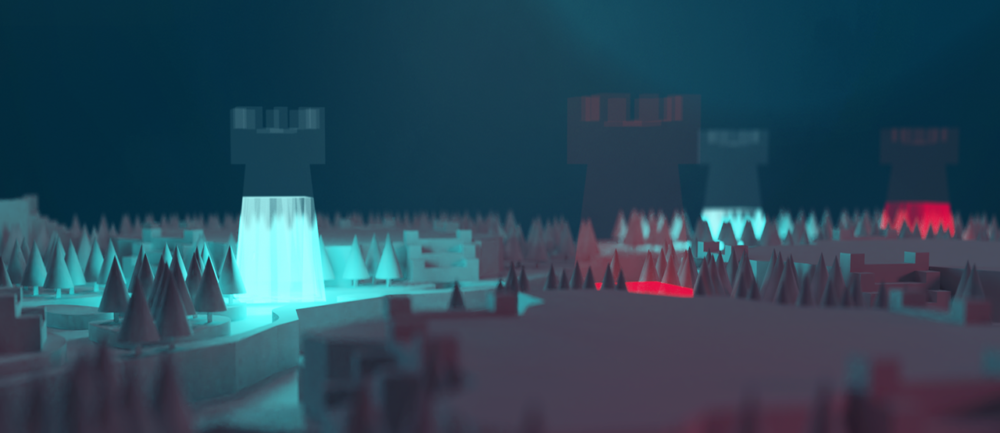A technology-didactic model
The intensive digitalization over relatively few years has led to a focus on teaching with new technologies and technological production. At the same time, a need has arisen to achieve greater mutual understanding and coherence across educational levels – in the “education chain”. Schools have also opened up or are asked to open up to their environment, including businesses, other public sector organizations, and civil society.
In this context, the ROBOdidactics model has been developed and refined during a Southern Danish project series. The model is practice-based and qualified in an action research process.
About
The technology-didactic model supports the planning, evaluation, and communication of teaching with digital production. The model covers 4 dimensions:
TEACHING DESIGN with learning objectives, pedagogical methods, student co-determination, evaluations, etc.
DIGITAL PRODUCTION about the technological part of the learning processes, with various methodological approaches to iterative development and innovation processes.
DIGITAL LITERACY, which includes the technological empowerment of students, their critical thinking, and ethical considerations.
ENVIRONMENT / THE EXTERNAL WORLD as a perspective by collaborating with companies, other educational institutions, etc., with career learning as one of the important methods.
Users can access ROBOdidactics “anywhere they want” and choose “whatever they want” as the appropriate elements for the given individual teaching modules.
ROBOdidactics vs. 2.0

Didactic framework with guideline
In a series of didactic workshops across the education chain, numerous teachers and the schools’ pedagogical coordinators have contributed to the iterative development of ROBOdidactics.
Moreover, version 2.0 of the model has been supplemented with guiding reflection questions that can support the understanding of the model.
ROBOdidactics has been developed, tested, and reviewed across educational organizations and levels during a Southern Danish project series (2018-2022).
In MYRE (2023 and beyond), the model is used as a common framework to communicate, evaluate, and further develop educational programs with emerging technologies.

